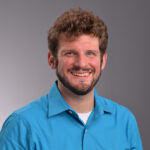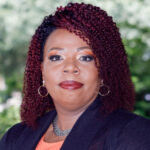Religion, Arts, and Literature
Syllabi - Topic: Religion, Arts, and Literature - 61 results
Select an item by clicking its checkboxA 2013 course by Paul Burford at Tyndale Seminary "designed to educate students regarding the evolution and relevance of faith perspectives specific to Canadian film and filmmakers."
A 2008 course by Thomas Leininger and Tom Reynolds at Regis University considers "modern Catholic literature" from a variety of perspectives.
A 2013 course by Denis Bekkering at the University of Waterloo on how a variety of films "approaches the 'revival preacher as religious fake' formula."
A 2011 course by Robin Jensen at Vanderbilt University "is an interdisciplinary study of the art and architecture in the Roman Empire of the fourth through sixth centuries CE in the context of political and religious transformations during that era."
A 2008 course by Nasser Rabbat at MIT "introduces the history of Islamic cultures through architecture. Religious, commemorative, and educational structures are surveyed from the beginning of Islam in 7th-century Arabia up to the present."
A course by Margaret Olin at Yale University on "how people have imagined, constructed or enacted space in Jewish life from the period from the nineteenth century until now."
A 2002 course by K.I. Koppedrayer at Wilfrid Laurier University explores "how Hindus, Buddhists and others have expressed their understanding of the nature, meaning and goal of human existence in stories, architecture and ritual."
A 1998 course by Thomas Peterson at Alfred University "explores how cultural worlds of meaning arise by examining artists and shamans who are involved in their constructions . . . (and) the relationship between material culture and the construction of meaning in various cultures."
A 2011 course by Adam Porter at Illinois College on American "civil religion."
A 2009 course by Bryan Stone at Boston University School of Theology "uses the medium of film as an avenue for reflection upon the meaning and truth of the Christian faith as well as its communication and embodiment in contemporary culture."
A 2013 course by Bron Taylor at the University of Florida "examines religius, spiritual, and political dimensions" of representations of nature from the 1930s to 2009.
A 2001 course by Casey Haskins at Purchase College examines questions such a show film serves "as a vehicle for philosophical ideas" and what film is.
A 2010 course by Ken Frieden at Syracuse University examines the "representation of Israelis and Palestinians in literature and film, focusing on how each group views the other."
A 2004 course by Annette Reed at McMaster University analyzes "stories from the Hebrew Bible, âApocrypha,â and New Testament from the perspective of their narrative artistry, approaching biblical literature as literature."
A 2012 course by Sean Hayden at Louisville Presbyterian Theological Seminary uses Wendell Berry's "poems, fiction and essays . . . . [to] build up a perspective on the meaning of life with depth and coherenceâa philosophy of life" around selected theological themes.
A 2013 course by Jack Hawley at Columbia University on selections of the poetry attributed to Surdas and the "genesis and development of the Sur tradition."
A 2011 course by Richard Marks at Washington and Lee University approaches "20th-century authors writing in Yiddish and Hebrew . . . as literary expressions of religious themes and as responses to the historical and religious crises of modern Jewish life in Europe, the United States, and Israel."
A course by Kevin Lewis at the University of South Carolina aims at "critically appraising meaning and method in films meant to stir reflection on potent material."
A 2001 course by Darren Middleton at Texas Christian University "examines how the figure of Jesus and the symbol of Christ has been appropriated by recent creative writers and filmmakers."
A 2009 course by Emilie Townes at Yale Divinity School is "an examination of the ways in which metaphors function at the intersections of various forms of oppression."
A 2007 course by Diane Winston at the University of Southern California about "how religious beliefs and behaviors are embedded, embodied and emplotted on television drama" with special attention to post 9/11 TV.
A 2017 course by Merril Smoak at Gateway Seminary covers the "biblical and theological origins of worship" as well as Christian spirituality.
A 2008 course by Jane Naomi Iwamura at the University of Southern California explores "the complex intersections of race and religion in contemporary America through the rhetorical analysis of written texts and film."
A 2013 course by Zachary Braiterman at Syracuse University that examines "the intersection of religion with auratic aesthetics, technology, and new media."
A 2002 course by Darren Middleton at Texas Christian University aims to "examine and assess the major beliefs and practices of five world faiths [Hinduism, Judaism, Buddhism, Christianity, and Islam] through a careful, critical study of selected world fiction."
A 2013 course by Michael Brandon McCormack at Louisville Presbyterian Theological Seminary seeks "to foster critical reflection on the relationship between black churches, religious practices and popular culture in the post- Civil Rights era."
A 2011 course by Colleen McDannell at the University of Utah asks "how do commercial filmmakers . . . understand religion? How does Hollywood call on religion to articulate various social, aesthetic, and economic concerns? Which social and cultural changes have made their impact on the movies?"
A 2009 course by Judith Weisenfeld at Princeton University on "the politics of representing religion at key moments in both American film and American religious history."
A course by Sarah Rivett at Princeton University "charts how a supernatural domain . . . Persists throughout American literary history."
A 2012 course by Molly Jensen at Southwestern University approaches American religion through novels and "considering distinctive religious expressions of geographically- and culturally-diverse communities."
A 2011 course by Louis Nelson at the University of Virginia covers theories of sacred spaces, places of worship, and other "more peripheral assertions of sanctity on space."
A 2005 course by Cheryl Rhodes at the University of South Carolina "designed to assist the student in recognizing and understanding the use of religion and the Bible in contemporary fiction and film."
A 2002 course by Elizabeth Tillar at St. Anselm College "explores theological themes, symbols, motifs, and images through screenings of American and foreign films."
A 2010 course by Gail Hamner at Syracuse University explores "various understandings and functions of religion as we discuss films and articles in light of our experiences."
A 2002 course by Elizabeth Tillar at St. Anselm College "explores theological themes, symbols, motifs, and images through screenings of American and foreign films."
A 2010 course by Gail Hamner at Syracuse University explores "various understandings and functions of religion as we discuss films and articles in light of our experiences."
A 2012 course by Douglas Cowan at the University of Waterloo focused on "discerning how the various dimensions of religious belief and practice are reflected and refracted in film and television . . . in late modern society."
An online course by Cheryl Rhodes at the University of South Carolina that examines the ways film affects how "people understand religious concepts."
A 2000 course by Alan Altany at Marshall University uses "journals, fiction, and web exploration . . . (to access) the spiritual insights of various persons as they portray their search for and experience of what religions call the sacred" with special attention to the concept of place.
A 1999 course by Ann Matter at the University of Pennsylvania "explores some ways in which religious ideas and practices appear in works of literature from different cultures" with a focus on the modern period and the Christian tradition.
A 2010 course by Ann Grodzins Gold at Syracuse University uses stories "to learn about several different religious worlds" and particular issues that cut across them.
A 2001 course by Ann Matter at the University of Pennsylvania explores "the intersection of Christian theology, liturgy and in the work of Johann Sebastian Bach."
A course by Todd Lewis at College of the Holy Cross focuses"on the phenomenon of religion in comparative and global perspective, exploring the connections between religious doctrines, rituals, and cultural performances."
A course by Jason Wrench at Ohio University examines "the interrelationship between religion and communication."
A 1999 course by Peter Gilmour and Richard Ascough at Loyola University Chicago.
A 1998 course by Tony Michael and Ken Derry at the University of Toronto.
A 1998 course by Lissa McCullough at New York University explores religious themes in great works of Western literature.
A 2008 course by Joseph Edelheit at St. Cloud State University "offers a survey-overview of Jewish literature in the 20th century."
A 2011 course by Jim Watts at Syracuse University uses rhetoric to study religious discourse and "ancient Near Eastern literature as a resource for the study of both comparative rhetoric and religion."
A 2010 course by Ken Brashier at Reed College aims "to learn the mechanics of translation and to develop an awareness of what it means to transform the words of one culture to that of another."
A 1999 course by Darren Middleton at Texas Christian University explores "construals of God through a combination of novels, short fiction, and memoir extracts, on the one hand, and through a sustained reflection on Jack Miles's literary study of the God of the Hebrew Bible, his God: A Biography, on the other hand."
A 2005 course by Rudra Vilius Dundzila at City Colleges of Chicago is an "interdisciplinary survey of significant intellectual and artistic achievements of non-Western cultures through selected works of literature, philosophy, visual art, music and other performing arts."
A 2002 course by Amir Hussain and Crerar Douglas at California State University, Northridge, includes "a close reading of Blake's biography . . . [and] the art and poetry that he created."
A 2014 course by Milner Seifert at Bexley Seabury Seminary provides "a survey of choral literature with attention to its historical aspects, performance practice, and appropriateness in the context of Christian worship and the Church year."
A 2016 course by James McGrath at Butler University explores "big questions" through the lens of religion and science fiction.
A 1997 course by Thomas Peterson at Alfred University explores "How and why are symbolic frameworks transmuted from certain forms to others through the creative imagination? Special attention to masking will help focus on "image" at the point where ritual and myth intersect with the performing and visual arts. Masking is also a place where identity and culture meet; it therefore raises the question about how the creative process is both a personal and social phenomenon."
A 2014 course by Ron Anderson at Garrett-Evangelical Theological Seminary provides "a historical and theological overview of church music. Although there will be some semblance to surveys of music history, it will focus on the various histories and traditions that have primarily shaped the practice of church music in North America."
A 2002 course by Brendan McGroarty and Sally Montgomery at Catholic University of America "considers methods of actor training in the light of various spiritual traditions."

